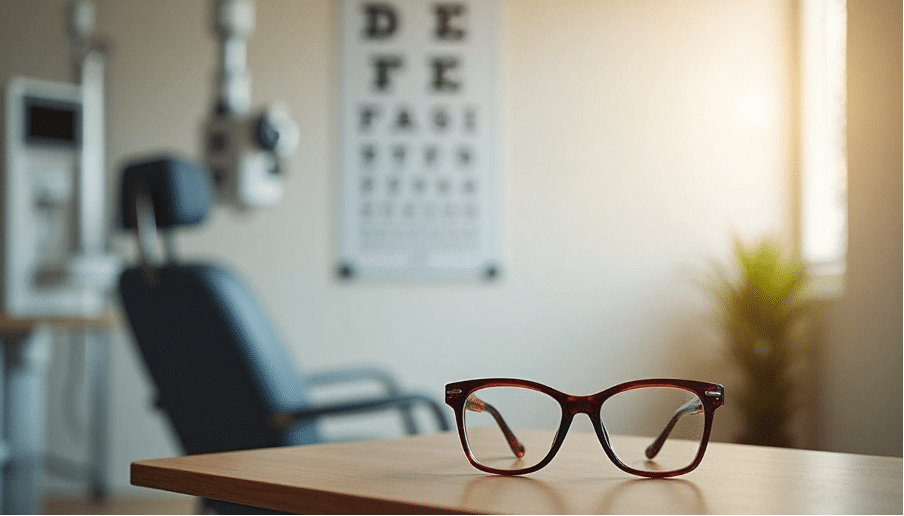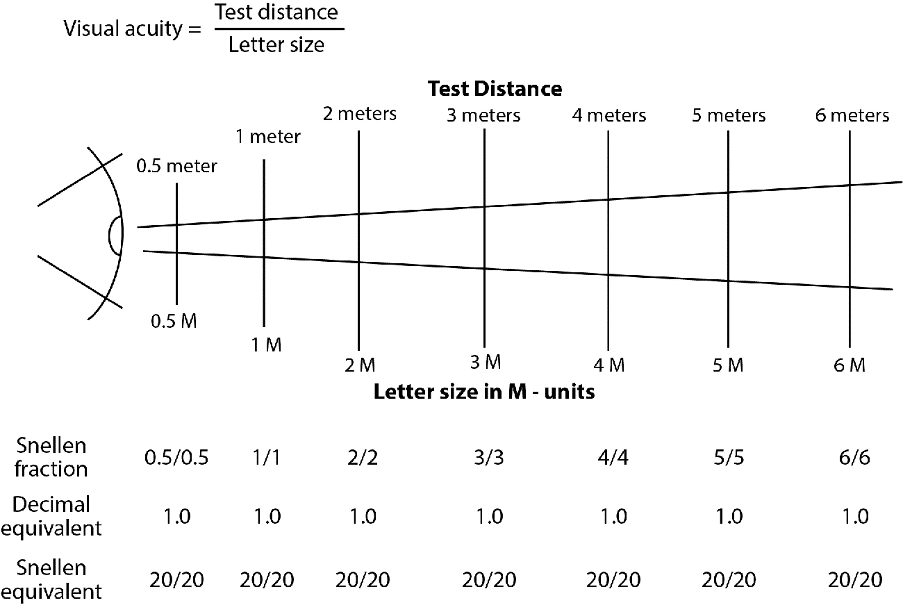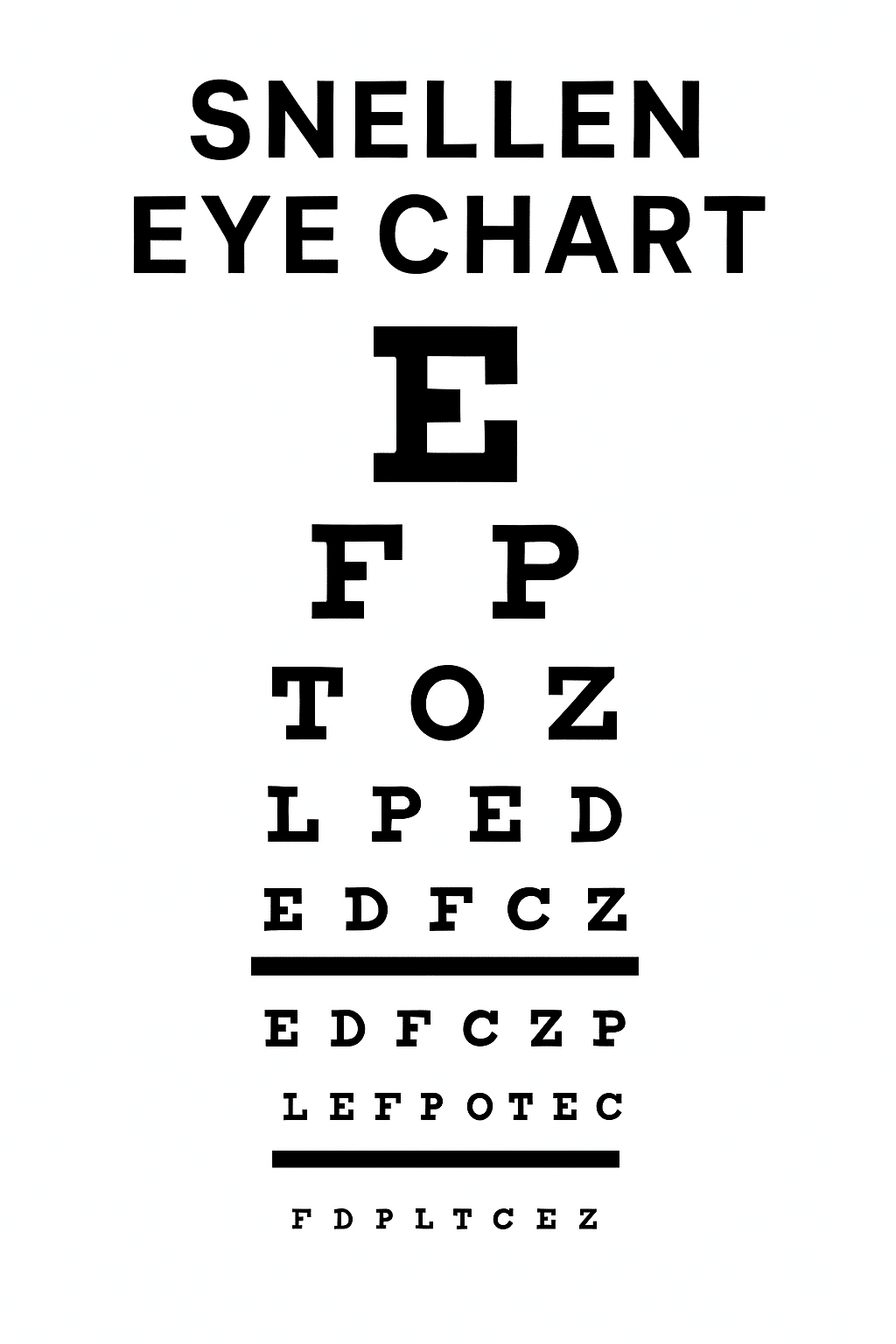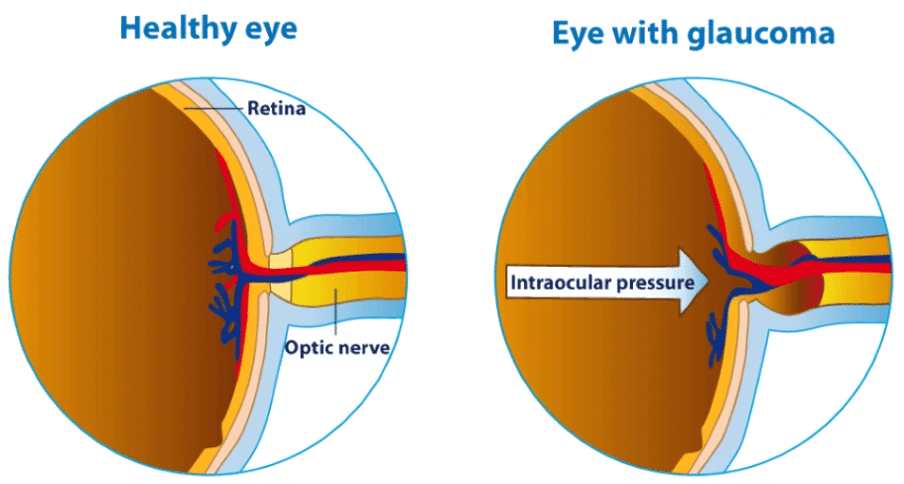You might be surprised to learn that 20/20 vision isn’t as common as most people think. Only 35% of adults worldwide have 20/20 vision naturally, without glasses, contacts, or surgery. Many people call it “perfect eyesight,” though reality tells a different story.
Modern vision correction helps about 75% of adults achieve 20/20 vision. This measure serves as a standard for good eyesight and pilots need it. The test just shows how sharp your vision is from a specific distance. Your overall visual ability depends on many other things. These include peripheral awareness, eye coordination, depth perception, focus and colour vision. Learning these differences helps you understand what visual acuity means and why “perfect vision” can mislead people.
What is meant by 20/20 vision?

The term 20/20 vision represents a standard measurement of visual acuity – your eyesight’s sharpness or clarity. Many people misinterpret this as “perfect vision,” but the measurement actually shows what an average person sees at a specific distance.
The basics of visual acuity
Visual acuity shows how sharp and clear your vision is and how well you can spot fine details. Your eyes’ ability to resolve and recognise letters of different sizes and shapes determines this measurement. Eye care professionals scrutinise this specific aspect of your overall vision capability during assessments. Eye doctors typically measure visual acuity with a standardised eye chart, and the Snellen chart stands out as the most prominent choice. Letters on this chart become smaller as you read down the lines. Measurements happen at a standard distance – usually 20 feet (6 metres) – where your eyes naturally focus without extra effort.
Curious if 20/20 vision is truly perfect? Let the experts at Precision Vision London assess your eyes and help you achieve your sharpest possible vision. Book your eye consultation today.
How 20/20 compares to other vision levels
A “20/20 vision” rating means you can see objects at 20 feet just as clearly as someone with normal eyesight would. The first number shows your distance from the chart, while the second number tells us where a person with normal vision could read that same line.
Your vision might be:
- Better than 20/20: Some people achieve 20/15 or even 20/10 vision, which means they see at 20 feet what others need to be at 15 or 10 feet to see clearly.
- Worse than 20/20: A 20/40 vision means you must stand at 20 feet to see what someone with normal vision spots from 40 feet away.
- Legally blind: This classification applies to people whose vision cannot improve beyond 20/20 with correction.
Global standards: 20/20 vs 6/6
Different measurement systems exist worldwide. The UK and other metric system countries use 6/6 instead of 20/20. This measurement uses 6 metres as the standard testing distance rather than 20 feet. Both measurements show the same level of visual clarity – normal vision at the standard distance. Letters on the 6/6 line create 5 minutes of arc, while individual parts of each letter make 1 minute of arc. Vision testing plays a vital role in identifying vision problems early. The World Health Organisation reports that many people don’t know they have vision impairment, though proper intervention can prevent or address most cases.

How is 20/20 vision tested?
Eye doctors use several ways to check if you have 20/20 vision. These tests measure how well you see and help spot vision problems that might need correction.
Snellen chart and visual acuity tests
The Snellen chart stands out as the most familiar way to test vision clarity. Dutch ophthalmologist Hermann Snellen created it in the 1860s. The standard chart shows 11 rows of capital letters that start with one big letter at the top and get smaller as you go down.
A typical Snellen test requires you to stand 20 feet (6 metres) from the chart and cover each eye one at a time. You’ll need to read out the smallest line of letters you can see clearly. Your vision score comes from the smallest line you read correctly.
Some people can’t read letters, so other options work better:
- The Random E or Tumbling E test lets you point which way the “E” faces
- Picture charts work well for children or non-readers
- Near vision reading charts should be held about 14 inches (36 centimetres) from your face

Retinoscopy and autorefraction
Eye care professionals go beyond simple vision tests and use other methods to measure focusing problems:
Retinoscopy happens when your eye doctor shines light into your eye to see how it bounces off your retina. They place different lenses in front of your eye to find the exact prescription you need. This method works great with young kids or patients who can’t give verbal answers.
Autorefraction uses computer equipment to measure light reflexion from your retina. This method works faster than retinoscopy but sometimes suggests stronger prescriptions than needed, especially in young patients who can focus well.
What your test results really mean
Vision test results show up as fractions like 20/20 or 6/6. The first number shows how far you stood from the chart, while the second tells us how far someone with normal vision could read that same line. Getting 20/20 (or 6/6 in metric) means you see objects at 20 feet just like someone with normal vision. Your vision can actually be better than 20/20 – some people see 20/15 or even 20/10. A score of 20/40 means you need to be 20 feet away to see what someone with normal vision spots from 40 feet. British standards define vision below 6/60 (20/200) as legally blind.
Why some people don’t have 20/20 vision
Many people can’t achieve 20/20 vision even under perfect testing conditions. Let’s look at what causes this and see if there are ways to improve your eyesight.
Common vision problems
Here are the most common refractive errors that keep people from having 20/20 vision:
- Myopia (short-sightedness) – You’ll see distant objects as blurry while close ones stay clear. This condition affects approximately 30% of UK adults.
- Hyperopia (long-sightedness) – Things up close look blurry but distant objects remain clearer.
- Astigmatism – Your cornea’s irregular shape makes light focus at different points. This leads to distorted vision no matter the distance.
- Presbyopia – Your eye’s lens gets stiffer with age. This makes it hard to focus on close objects, usually starting around 40.
These conditions usually develop because your eyes aren’t shaped quite right, or your cornea’s curve is off. This means light doesn’t focus properly on your retina.
Age and lifestyle effects
Your eyesight changes as you get older. Almost 96% of people in the UK notice changes in their vision by age 65. You’re more likely to develop conditions like macular degeneration, cataracts, and glaucoma as you age. On top of that, today’s lifestyle choices can hurt your vision. Too much screen time leads to digital eye strain and raises your risk of myopia, especially in kids. Bad nutrition, smoking, and poor UV protection can make your vision worse faster. The good news? Laser eye surgery might help you get 20/20 vision. About 85% of UK patients who get laser surgery end up with 20/20 vision or better. LASIK, the most popular option, has a 96% satisfaction rate among UK patients according to the NHS.

Image Source: Disabled World
When to see an eye doctor
You should see an eye doctor right away if you notice:
- Sudden changes in your vision or vision loss
- Eye pain or redness that won’t go away
- Light flashes or lots of floaters
- Double vision
- Problems seeing at night
Adults should get their eyes checked every two years, and kids need testing before they start school. These regular check-ups help catch problems early, before they affect your daily life.
Can you get 20/20 vision back?
Getting 20/20 vision is both possible and within reach for people with vision problems. You have several proven options to fix refractive errors and sharpen your eyesight.
Corrective lenses and their role
Glasses and contact lenses stand out as the most popular ways to achieve 20/20 vision. These devices help focus light correctly on your retina to fix refractive errors. Some people who wear them report vision as sharp as 20/15 or maybe even 20/10. Prescription eyeglasses come with clear benefits – they don’t require any surgery, protect your eyes, and cost less than other options. Contact lenses sit right on your eye’s surface and give you better peripheral vision than glasses.
Laser eye surgery: how it works and who it helps
Your cornea gets permanently reshaped during laser eye surgery to fix vision problems.This surgery helps with short-sightedness (myopia), long-sightedness (hyperopia), and astigmatism.
Common procedures include:
- LASIK: Creates a corneal flap, reshapes underlying tissue, then repositions the flap
- PRK/LASEK: Removes the cornea’s outer layer before reshaping
- SMILE: Creates and removes a small disc within the cornea
Local anaesthetic eye drops make these 20-30 minute procedures comfortable. About 85% of laser eye surgery patients in the UK end up with 20/20 vision or better.
Curious if 20/20 vision is truly perfect? Let the experts at Precision Vision London assess your eyes and help you achieve your sharpest possible vision. Book your eye consultation today.
What to expect after surgery
Patients usually notice some temporary effects like dry eyes, blurred vision, and light sensitivity after surgery. Your vision should settle within 3-6 months. LASIK patients often return to work the next day, while LASEK recovery takes 1-4 weeks. More than 8 in 10 LASIK patients don’t need glasses or contacts for most daily activities.
Maintaining good vision long-term
Your eyesight might change over time, even after successful vision correction. Regular detailed eye exams help keep your vision at its best throughout life, especially when you notice changes. Vision correction results last, but age can still affect your eyesight. Your chances of better vision depend in part on how good your vision was before surgery. People with mild nearsightedness usually get the best results.
Conclusion
20/20 vision reveals just one part of your overall visual health. People often call it “perfect eyesight,” but it actually shows normal visual acuity at a specific distance. All the same, this standard plays a key role in daily activities and certain careers.
Your options are plenty if you struggle with visual acuity. Corrective lenses can help right away. Laser eye surgery offers a long-term fix. British patients see great results, with approximately 85% achieving 20/20 vision or better after their procedure. LASIK surgery in the UK works so well that 96% of patients are happy with their results. This makes it an attractive choice for anyone who wants freedom from corrective lenses.
Your eyes need regular checkups, whatever your current visual acuity might be. Vision changes naturally happen throughout life. This becomes even more true after 65, when all but one of these UK residents experience vision changes. You can maintain clearer vision through proper intervention with glasses, contact lenses, or surgery.
It’s worth mentioning that visual health covers much more than just acuity. Your overall visual experience depends on peripheral awareness, depth perception, colour vision, and eye coordination. While 20/20 vision works as a good measure, your complete visual health needs detailed attention from qualified eye care professionals.
Key Takeaways
Understanding 20/20 vision helps you make informed decisions about your eye health and available correction options.
- 20/20 vision isn’t “perfect sight” – it only measures sharpness at 20 feet, not peripheral vision, depth perception, or colour recognition
- Only 35% of adults naturally have 20/20 vision, but 75% can achieve it with proper glasses, contacts, or surgery
- Regular eye exams every two years are essential, as 96% of people over 65 experience vision changes requiring intervention
- Laser eye surgery offers permanent correction with 85% of UK patients achieving 20/20 vision and 96% reporting satisfaction
- Vision problems like myopia, hyperopia, and astigmatism are highly treatable through corrective lenses or surgical procedures
The key insight is that whilst 20/20 vision serves as a useful benchmark, your complete visual health encompasses multiple factors beyond just distance acuity. Whether through corrective lenses or surgery, achieving clearer vision is possible for most people with proper professional guidance.
FAQs
Q1. Is 20/20 vision the same as perfect eyesight? No, 20/20 vision is not perfect eyesight. It represents normal visual acuity, measuring the sharpness of vision at a specific distance. Other aspects like peripheral awareness, depth perception, and colour vision also contribute to overall visual ability.
Q2. How common is 20/20 vision without correction? Only about 35% of adults worldwide have 20/20 vision without requiring glasses, contact lenses, or eye surgery. However, with proper correction, approximately 75% of adults can achieve 20/20 vision.
Q3. What does a visual acuity of 6/9 mean? A visual acuity of 6/9 indicates that you can see at 6 metres what a person with normal vision can see at 9 metres. This suggests your vision is slightly below the standard 6/6 (equivalent to 20/20) vision.
Q4. Can laser eye surgery help achieve 20/20 vision? Yes, laser eye surgery can often help achieve 20/20 vision. In the UK, approximately 85% of laser eye surgery patients achieve 20/20 vision or better following their procedure, with a 96% satisfaction rate for LASIK surgery.
Q5. How often should I have my eyes examined? Adults should have comprehensive eye examinations every two years, even without noticeable vision problems. Regular check-ups allow for early detection of vision issues, especially important as nearly 96% of people in the UK experience some form of vision change by age 65.
Authors & Reviewer
-
 Olivia: Author
Olivia: AuthorHi, I'm Olivia, a passionate writer specialising in eye care, vision health, and the latest advancements in optometry. I strive to craft informative and engaging articles that help readers make informed decisions about their eye health. With a keen eye for detail and a commitment to delivering accurate, research-backed content, I aim to educate and inspire through every piece I write.

